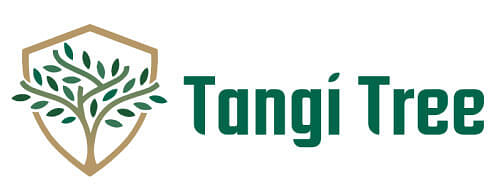Get storm-ready! Be hurricane-prepared BEFORE the season starts.

The Importance of Seasonal Tree Inspections
Seasonal tree inspections are an essential part of maintaining the health, safety, and appearance of trees in your landscape. Trees face different challenges and opportunities throughout the year, and each season brings specific needs that, when addressed, can ensure trees thrive and stay safe. Ignoring these seasonal changes can lead to undetected issues such as pest infestations, structural weaknesses, or diseases that may threaten not only the tree’s health but also the safety of your property and loved ones.
By conducting regular tree inspections in each season, you can catch these issues early, apply necessary treatments, and plan for future maintenance. This proactive approach not only enhances the lifespan and beauty of your trees but also minimizes potential hazards like falling branches during storms. Understanding what to look for during each season and why it matters is the first step in becoming a responsible and knowledgeable tree owner.
Spring Inspections: New Growth and Recovery
Check for Damage from Winter Weather: Winter can be harsh on trees, leaving behind damage that may not be immediately apparent. During spring, it’s crucial to inspect trees for broken or weakened branches, frost cracks, and signs of disease that might have developed due to winter stress. By identifying and addressing these issues early, you can ensure that trees recover and grow strong as they transition into the warmer months.
Assess Soil and Root Health: Spring is also the ideal time to evaluate soil conditions and root health as trees begin their active growth phase. Check soil moisture levels and look for signs of root rot or compaction that could hinder the tree’s ability to absorb nutrients and water. Ensuring the soil is in good condition and that roots are healthy sets the foundation for robust growth and development throughout the year.
Identify Pests and Disease Early: Spring is when many pests and diseases begin to emerge. Conducting a thorough inspection helps spot early signs of issues such as fungal infections or pest infestations that could spread quickly if left untreated. Early detection allows for immediate treatment, preventing damage to new leaves and branches as they grow. Keeping pests and diseases under control in spring can significantly reduce problems later in the year, making this a crucial part of the seasonal inspection process.
Summer Inspections: Growth Monitoring and Pest Control
Monitor Tree Canopies for Health: During the summer, tree canopies are in full bloom, providing an excellent opportunity to assess overall health. Check that leaves are vibrant and full, without signs of wilting, discoloration, or holes. These symptoms may indicate issues such as dehydration, nutrient deficiencies, or pest damage. Regular monitoring ensures that any concerns are addressed promptly, allowing the tree to maintain its lush and healthy appearance throughout the season.
Inspect for Pests and Insects: Summer is a prime time for pest activity, as many insects thrive in warm weather. Common pests like aphids, beetles, and caterpillars can cause significant damage if left unchecked. Look for clusters of insects on leaves or branches, small holes, or other signs of feeding activity. Catching infestations early allows for targeted treatments that can protect the tree and prevent the pests from spreading to other parts of the landscape.
Assess Structural Integrity: Summer storms can be unpredictable and may pose risks to trees with weak or overgrown branches. Inspect the tree’s structure, particularly its limbs and canopy, to identify any branches that are overly dense or leaning precariously. Pruning these branches can reduce the risk of damage from strong winds or heavy rain, ensuring the tree remains stable and safe throughout the summer months.
Fall Inspections: Preparing for Dormancy
Check for Dead or Weak Branches: As trees prepare to go dormant in the fall, it’s essential to identify and remove dead or weak branches. These branches are more susceptible to breaking during winter storms, posing safety hazards. By addressing these issues before the onset of cold weather, you can minimize the risk of damage and ensure the tree is better prepared to withstand the stresses of winter.
Examine Root Systems and Soil Conditions: Fall is an ideal time to evaluate the root system and soil conditions as trees prepare for dormancy. Inspect the soil around the base of the tree to ensure it is well-drained and free of compaction, as these conditions can affect root health. Healthy roots are crucial for the tree’s ability to absorb nutrients and maintain stability, especially when it enters its inactive phase.
Inspect for Diseases and Fungus: Fall provides an opportunity to catch and treat any diseases or fungal growth before the tree becomes dormant. Diseases and fungi can spread rapidly during winter if left untreated, leading to more severe problems in spring. Inspect the tree’s trunk, branches, and leaves for any signs of unusual spots, mold, or growths. Early intervention can prevent these issues from worsening, allowing the tree to enter dormancy in a healthier state.
Winter Inspections: Post-Storm Damage and Preparation
Assess Damage After Storms: Winter storms can be particularly harsh, causing branches to break or trees to lean due to the weight of snow and ice. After each major storm, inspect trees for any damage, such as broken limbs or cracks in the trunk. Identifying and removing damaged branches promptly reduces the risk of further harm and helps maintain the tree’s structural integrity during the rest of the winter season.
Inspect Tree Bark and Trunk: Winter’s cold temperatures can cause frost cracks and stress to tree bark and trunks. These cracks often appear suddenly and can become a site for disease or pest infestations later on. Examine the tree’s trunk and major branches for signs of splitting or peeling bark, which may indicate that the tree is under stress. Addressing these issues now can prevent more extensive damage when temperatures rise again.
Plan for Spring Care: Winter is the time to prepare for the upcoming spring growth phase. During inspections, note any areas that may need extra care when the tree resumes growth, such as branches requiring pruning or areas showing signs of disease. Creating a spring care plan allows for timely treatment and intervention, ensuring the tree can grow and flourish once the weather warms up.
Benefits of Seasonal Tree Inspections
Prevent Hazards: Regular seasonal inspections are vital in preventing hazards such as falling branches, which can cause property damage or injury. By proactively identifying weak, dead, or overgrown branches during each season, you can reduce the risks associated with storms, high winds, and seasonal changes. This safety-first approach helps protect not only your landscape but also the people and property around it.
Enhance Tree Longevity: Seasonal tree inspections play a crucial role in extending the life of your trees. By detecting and addressing problems such as pests, diseases, and structural weaknesses early, you can provide timely treatments that prevent further damage. A tree that receives consistent care is more likely to thrive, grow stronger, and live longer, enhancing the overall value of your landscape.
Improve Tree Aesthetics: Regular care and maintenance during seasonal inspections also improve the aesthetic appeal of your trees. A healthy, well-maintained tree adds beauty and value to your property. Inspections allow for timely pruning, pest control, and disease management, keeping the tree’s canopy full and vibrant year-round. With a consistent inspection routine, you can ensure your trees remain lush, green, and attractive, enhancing the curb appeal of your home or business.
Keep Your Trees Thriving Year-Round with Tangi Tree!
Don't let seasonal changes put your trees at risk. Our licensed arborists will assess your trees in every season, ensuring they remain healthy, beautiful, and safe. Contact Tangi Tree now to set up your seasonal tree inspection and give your landscape the care it deserves.






